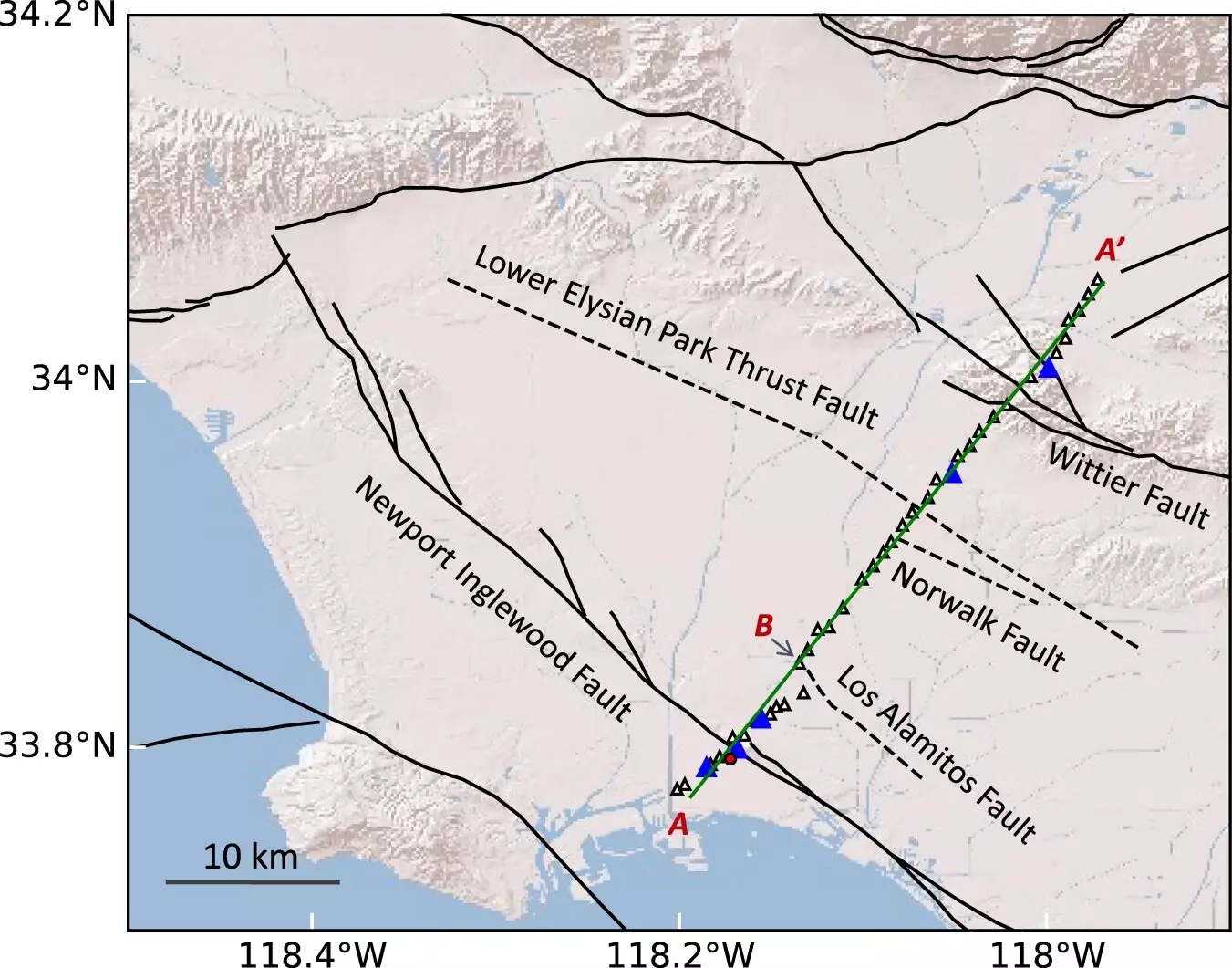A team of scientists, led by Dr. Xin Liu from The University of Hong Kong, has recently introduced a groundbreaking method called ambient noise differential adjoint tomography. This method allows researchers to visualize rocks with fluids, potentially leading to advancements in the discovery of water and oil resources. The findings of this study have been published in the prestigious journal Nature Communications.
Seismometers have long been used to study the Earth’s vibrations, but this new method takes it a step further. By recording the Earth’s natural vibrations, researchers can now visualize rocks with fluids in a cost-effective and easy way. This opens up new possibilities for studying areas in cities and oceans.
The team placed 42 seismometers along a line across the Los Angeles basin and made an interesting discovery. Rocks about 1-2 km beneath the surface near the Newport-Inglewood Fault contain a significant amount of fluids. These rocks have tiny holes filled with fluids, which may explain the occurrence of small earthquakes in Long Beach, California. The presence of fluids in these rocks reduces friction along the fault plane, causing the two rock blocks to slide past each other more easily and generate small earthquakes.
Identifying Water and Oil Resources
One of the most exciting applications of this method is the potential to find water and oil resources without expensive drilling. By generating images of the ground covered by seismometers, researchers can identify the speed at which seismic waves travel in different regions. In some locations, the seismic waves travel much slower, indicating the presence of fluids. Water and oil are both examples of fluids in rocks, so this method can accurately identify rocks containing these valuable resources.
Previously, discovering groundwater aquifers or deep fluid reservoirs required drilling multiple expensive wells or conducting costly seismic surveys using loud artificial sound. These methods were neither cost-effective nor environmentally friendly. In contrast, ambient noise differential adjoint tomography only requires weak seismic noise recordings from a few seismometers. This new technique significantly reduces the cost and environmental impact of resource exploration.
Applications Beyond Resource Exploration
The innovative method is not limited to resource exploration alone. It can also be used to create detailed images of the ground in urban areas and the deep ocean. By deploying a series of land seismometers or installing Ocean Bottom Seismometers (OBS) on the seafloor, researchers can gather valuable information about the geological hazards in urban areas and improve early warning systems for tsunamis. Additionally, this method enhances our understanding of the water cycle beneath the seafloor.
Ambient noise differential adjoint tomography has the potential to revolutionize geological research and have a profound impact on our lives. Its applications span from efficient resource exploration to effective disaster preparedness and sustainable environmental management. This scientific breakthrough holds excellent promise in shaping a better future for us all.
The introduction of this innovative method by Dr. Xin Liu and his team opens up new possibilities for visualizing rocks with fluids. By utilizing the Earth’s natural vibrations, researchers can now identify water and oil resources more cost-effectively. Furthermore, this method has broad applications in urban geology and understanding the deep ocean. This scientific breakthrough has the potential to revolutionize resource exploration and improve our understanding of geological hazards, ultimately paving the way for a brighter and more sustainable future.


Leave a Reply